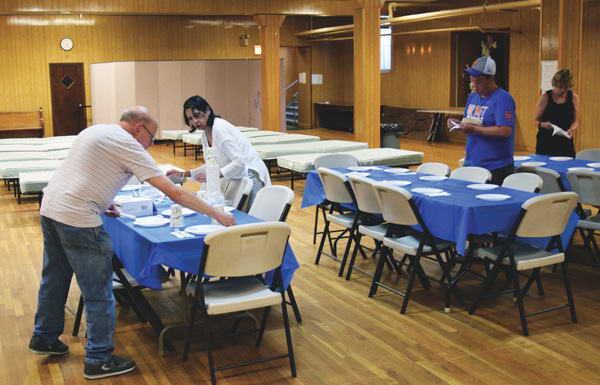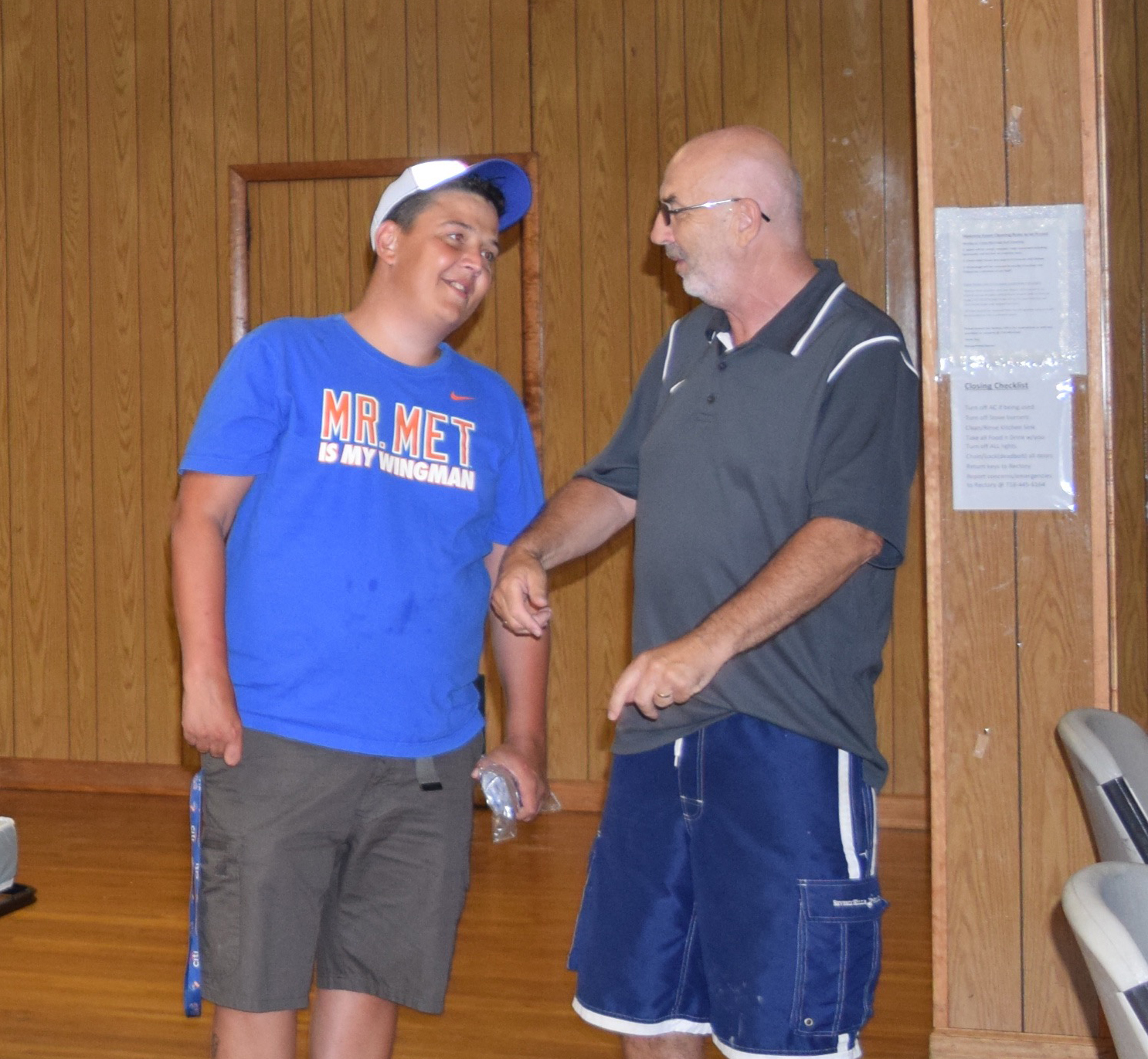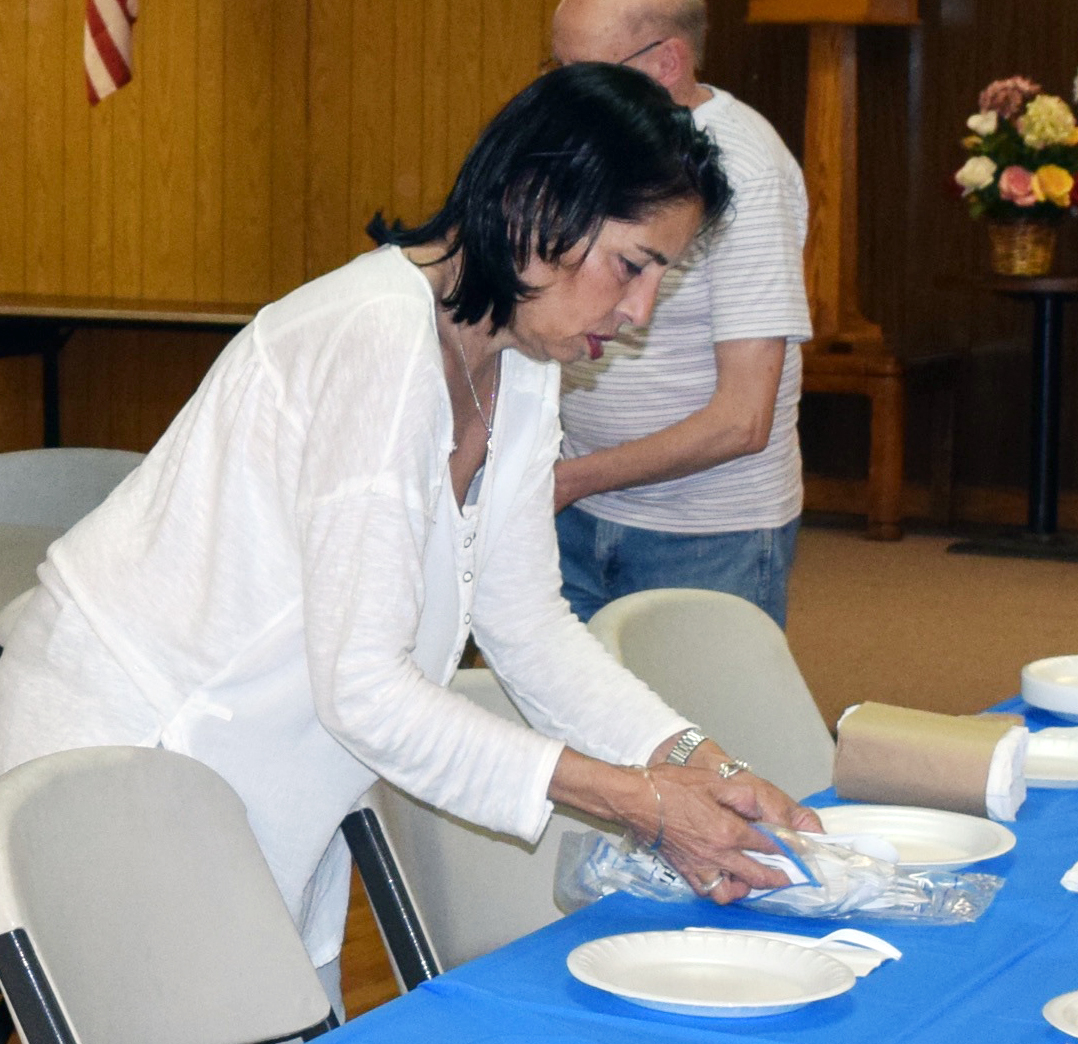
If someone had walked into St. Fidelis Church at 8 p.m. last Tuesday, they would not have been able to tell that some of the people sharing a meal were homeless.
“That is the beauty of our program,” said Michael Fogarty, coordinator of the temporary homeless shelter at the parish. “This way it restores their dignity as human beings.”
For the second summer in a row, the church in College Point has organized a temporary shelter to offer 10 homeless men a safe place to sleep. Parish volunteers welcome their guests with a warm, home-cooked meal, a safe place to sleep and a spirit of fellowship.
“When a Christian welcomes somebody who is needy we are welcoming Christ who is visiting our parish,” said Msgr. Denis Herron, pastor.
The program is set to house the 10 men for three nights a week in the basement of the parish until Labor Day. The men come from Bronx Works, a shelter that provides many services for the homeless.
Msgr. Herron added that to give temporary shelter to 10 people, the parish only needed to have a place for 10 beds, a bathroom facility (no showers needed) and be able to provide a meal. In the case of St. Fidelis, volunteers – often families or different parish groups – provide the meals. Volunteers include two men who stay overnight with the guests. The men come in at 7 p.m., share a family-style meal and have a restful night before getting picked up by Bronx Works at 5:30 a.m.
The parish seeks to, in this small way, address the problem of homelessness in the city. According to the Coalition of the Homeless, the homeless population in New York City is about 60,000.
When discerning about a temporary homeless shelter in the parish, Msgr. Herron formed a committee that included Sister Ruth Lautt, O.P., who introduced the idea to the priest.
They consulted with parishioners at St. Andrew Avellino, Flushing, whose shelter has been running for more than 30 years, Msgr. Herron said. The parish suggested Bronx Works, which ensures the guests have been screened and also provides the parish with expert support at all times. Because the parish basement is usually occupied during the rest of the year, a summer shelter was the feasible option.
“We found out that it was then when it is most needed” because other shelters are only open during the academic year, said Msgr. Herron. He explained that the men can stay at Bronx Works the other nights but that means that they have to sleep in a chair.
 Sense of Fellowship
Sense of Fellowship
In addition to being one of the corporal works of mercy, sheltering the homeless created a sense of fellowship and became a blessing for parish volunteers.
Last year, the response from the parish was tremendous, said Deacon Dan Donnelly, coordinator.
“Within two days we almost had meals covered for the whole summer,” he said. “It also brought the parish’s Spanish- and English-speaking communities together.”
Deacon Donnelly was delighted to see that nearly all of the parish’s 60 volunteers returned this year, plus new people interested in helping.
Parishioner Beatriz Rodriguez, who came to volunteer with her son and her friend, said that she had first thought she could help the shelter by setting up the beds and grabbing a broom so the guests could have a clean environment.
“But what God wanted me to do was to grab hands and offer smiles,” she said in Spanish. “I want to continue coming to the shelter because, as the Bible said ‘faith without works is dead.’”
Fogarty explained that the St. Fidelis program is part of the Emergency Shelter Network of Faith-Based and Community Organizations, Inc., a nonprofit devoted to aid the homeless throughout the five boroughs of New York City. The network was created in response to a speech given by then-Mayor Ed Koch in 1983. Koch challenged the faith-based community to help the growing numbers of homeless in the city. Several congregations responded and a network of volunteer-run shelters was born. In 2008 this network of shelters formalized their common cause and became known as the Emergency Shelter Network (E.S.N.).
In addition to St. Andrew Avellino, other Queens’ parishes that have shelters during the academic year include Immaculate Conception and St. Nicholas of Tolentine, Jamaica, according to the E.S.N. website.
Despite the support of many churches, there is still a lot to do. The current 60,000 homeless population reported by the Coalition of the Homeless only includes those who are sleeping in shelters. The real numbers are most likely higher. Out of the 60,000 figure, 24,000 are children.
 “Homelessness is just a human tragedy and just a real disgrace that this goes on in a country like ours,” Sister Ruth said. “We, as a parish, can’t fix all the things that are wrong with society, with people, but we can give a little comfort to 10 people a few times a week at night.”
“Homelessness is just a human tragedy and just a real disgrace that this goes on in a country like ours,” Sister Ruth said. “We, as a parish, can’t fix all the things that are wrong with society, with people, but we can give a little comfort to 10 people a few times a week at night.”
A safe, comfortable bed to sleep on – something many take for granted – is a luxury for these men. Sean McPhillips, who coordinates the shelter on Tuesdays, added that sometimes, after spending the day in 90-degree weather, the men are so exhausted that they go straight to bed. Others share the meal and talk to the parishioners.
“We don’t ask questions but often they would share their stories and it is amazing how much like you and I everybody is,” Deacon Donnelly said. “A surprise for me is that many were working poor. They had a day job but could not make enough to rent an apartment.”
The Coalition of the Homeless reported that in 2013, around 30 percent of homeless families in New York City were employed yet they could not afford housing. The goal of the temporary shelters part of E.S.N. is for those who are homeless to be able to eventually find housing.
“We take 10 men from all works of life,” said Fogarty, who is a secular Franciscan. “Some are guys that fell on hard times last year, some had menial jobs, other want to get up and get out … they are addressing (any circumstances they might be facing) to get off the streets.”
By the end of last summer, parishioners rejoiced when four of the 10 ended up getting jobs that could lead to some sort of housing.
